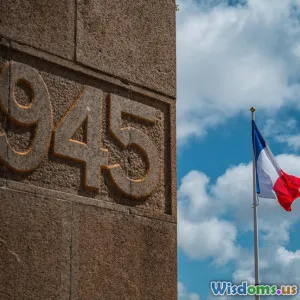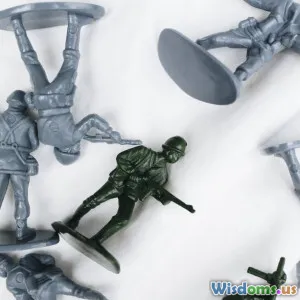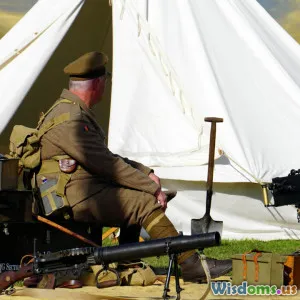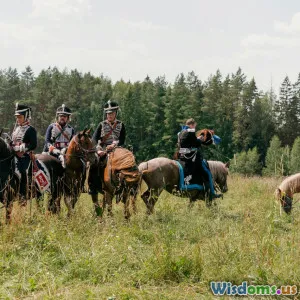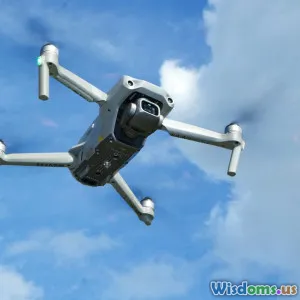
How Radar Technology Turned the Tide During the Battle of Britain
10 min read Explore how radar technology critically influenced the Battle of Britain, reshaping warfare and ensuring Allied victory. (0 Reviews)
How Radar Technology Turned the Tide During the Battle of Britain
Introduction: The Invisible Ally
In the summer and autumn of 1940, Britain stood defiant against the relentless air assault of Nazi Germany’s Luftwaffe. This confrontation, later dubbed the Battle of Britain, was a pivotal episode in World War II. At the heart of the British defense was an innovative technology that was as invisible as it was indispensable — radar. Often overshadowed by heroic dogfights and iconic fighter pilots, radar quietly served as the silent sentinel alerting the Royal Air Force (RAF) to incoming attacks. But how did this technological marvel work? And how exactly did it turn the tide of one of history’s most critical battles?
This article explores the fascinating story of radar during the Battle of Britain, underscoring its technical brilliance, strategic importance, and lasting impact on modern warfare.
The State of Air Defense Before Radar
Prior to radar, air defense relied heavily on visual spotting, radio intercepts, and human observers scattered around the country. Britain's system for early warning was known as the Observer Corps — volunteers who watched the skies and reported aircraft sightings via telephone. This decentralized and manual system posed serious delays and risks:
- Delayed detection: Enemy aircraft could approach undetected until they were close enough to be seen.
- Communication delays: Information filtering from observers to command centers was slow.
- Limited range: Cloud cover and poor visibility further hampered detection capabilities.
This meant that fighter aircraft were often scrambled too late, fighting in reactive rather than proactive modes.
Radar: The New Eyes of Britain
Origins and Development
Radar (Radio Detection and Ranging) systems in Britain evolved rapidly during the 1930s, thanks to pioneers like Sir Robert Watson-Watt and his team at the British Air Ministry. By 1935, their research culminated in a functioning air defense radar system known as Chain Home.
Chain Home consisted of long-range radio transmitters and receiver stations along the southeastern coast of Britain. These stations emitted radio waves which, when reflected back by aircraft, allowed operators to estimate the position, altitude, and speed of incoming enemy planes.
Key details of Chain Home’s capabilities included:
- Range: Approximately 120 miles (193 kilometers) detecting high-altitude bombers well before they intruded into British airspace.
- Resolution: Sufficient to track formations and vector RAF patrols.
- Integration: Linked to centralized Fighter Command control rooms for rapid data processing.
Operational Integration
The true strategic strength of radar was unlocked through its seamless integration into Britain's air defense system. At the Filter Room in Bentley Priory, raw radar data was cross-checked with reports from the Observer Corps and RAF intelligence to produce a real-time air picture. This ‘filtered’ information was then relayed to sector control rooms, where decisions on aircraft deployment were made.
Winston Churchill famously referred to radar as the 'miracle weapon' of the Battle of Britain — and rightly so.
Radar’s Tactical Role in the Battle of Britain
Early Warning and Efficient Scrambles
Before radar, RAF pilots faced the gamble of combatting approaching enemy aircraft with incomplete information. Radar removed that uncertainty by providing early, reliable warnings sometimes up to an hour before enemy planes reached their targets. This early detection translated directly into more effective deployment of limited RAF fighters.
Instead of launching widespread defensive patrols, Fighter Command could send out clearly vectored squadrons to intercept. According to RAF pilot accounts like those of Air Chief Marshal Sir Hugh Dowding, this precision control saved aircraft, pilot lives, and crucially preserved Britain’s air defense capacity.
Counteracting the Luftwaffe’s Strategies
The Luftwaffe relied heavily on surprise, attempting to overwhelm British defenses by massed bomber raids combined with fighter escort. Radar helped the British muddle those strategies through:
- Threat anticipation: The RAF knew exactly when and where attacks were most likely to occur, adapting their patrol patterns.
- Resource optimization: Radar reduced the need for continuous large-scale patrols, allowing squadrons to rest and focus efforts where most urgently required.
- Adaptability: Rapid updates enabled Fighter Command to respond dynamically to shifting aerial threats.
Real-World Impact
Numerous post-battle analyses confirm the quantifiable benefits. A study pointed out by historian Richard Overy states that without radar, British losses could have been 40% higher, compromising both air superiority and civilian morale. By detecting approximately two-thirds of incoming German raids in time for RAF to engage effectively, radar was directly responsible for maintaining the crucial air defense shield.
Case Study: The Eve of Battle - 15 September 1940
Known as “Battle of Britain Day,” September 15 saw one of the fiercest Luftwaffe raids against London. Thanks to radar warnings, RAF Fighter Command scrambled approximately 700 aircraft to intercept 1,100 German planes.
The meticulous coordination made possible by radar detections allowed the RAF to achieve victories despite smaller numbers, thwarting German objectives. Churchill later praised the day’s fighting as a turning point, noting how ‘we shall never surrender’ — an unwavering spirit bolstered by technological edge.
Technological Evolution and Legacy
Beyond Chain Home: Advancements During the War
Radar technology didn’t remain static. Throughout the war, British scientists refined systems for shorter ranges, worked on airborne radar to aid night-fighters, and expanded detection into more complex parameters such as signal strength and target shaping. This kept Britain one step ahead of Luftwaffe's evolving tactics.
Lasting Military and Civilian Impact
Radar's success at the Battle of Britain accelerated its post-war adoption worldwide. It transformed air defense doctrine, informed developments in navigation, weather forecasting, air traffic control, and even maritime monitoring.
Its legacy endures in modern sophisticated systems tracking orbital satellites and guiding civilian airliners safely worldwide.
Conclusion: The Silent Shield That Won the Skies
Radar was more than an instrument; it was the backbone of Britain's air defense strategy during the Battle of Britain. By offering unprecedented early-warning capabilities, radar allowed a smaller, outmatched RAF to confront and repel the formidable Luftwaffe threat effectively.
This technological innovation turned the tide, preserving British independence at a critical juncture and redefining the nature of warfare. The Battle of Britain stands as a lasting testament to how ingenuity, when leveraged strategically, can shape history’s outcome.
In remembering the pilots who soared to meet the enemy, it’s essential we also honor the unseen technological sentinel that guided their wings—radar, a true miracle weapon.
References & Further Reading
- Overy, Richard. The Battle of Britain: The Myth and the Reality. Viking Adult, 2002.
- Brown, Louis. A Radar History of World War II: Technical and Military Imperatives. IET, 1999.
- Richards, Denis. Royal Air Force 1939–1945: The Fight at Odds. HMSO, 1953.
- Churchill, Winston. Their Finest Hour, Wartime speeches referencing radar.
- Royal Air Force Museum, archival materials on Chain Home and Battle of Britain.
End of Article
Rate the Post
User Reviews
Other posts in World Wars
Popular Posts










